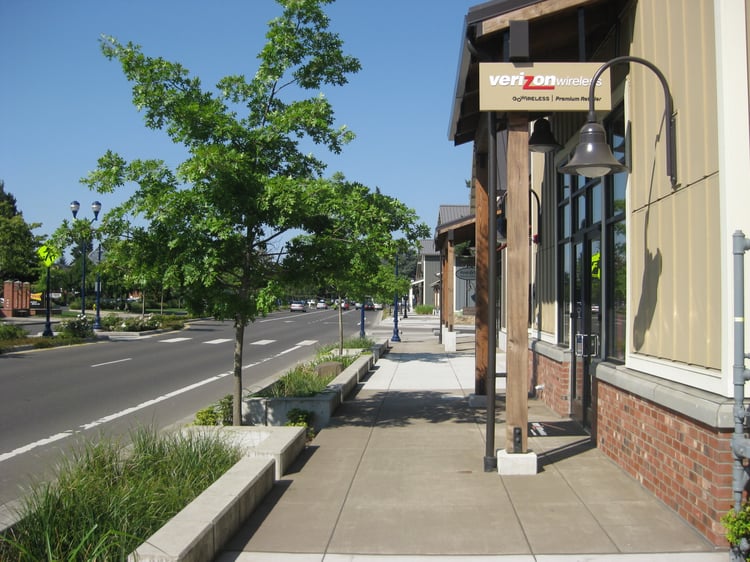
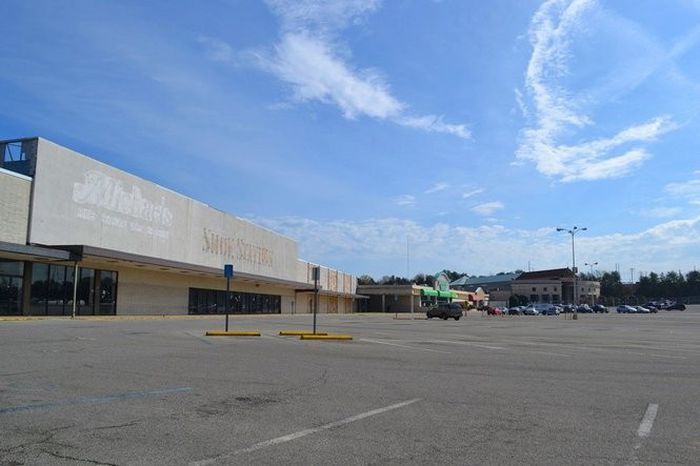 Ever wonder what our urban streets and avenues would be without street trees or other urban forestry components? Have you ever pulled into that shopping center from yesteryear only to find not a tree, planting island, or bit of shade in sight? And how did that wall-to-wall paved impervious area make you feel? Can cities and urban infrastructure even exist and provide an ample quality of life without urban forestry? Urban forestry is essential to our built-environment and population centers, and is defined by Wikipedia as “The care and management of single trees and tree populations in urban settings for the purpose of improving the urban environment.”
Ever wonder what our urban streets and avenues would be without street trees or other urban forestry components? Have you ever pulled into that shopping center from yesteryear only to find not a tree, planting island, or bit of shade in sight? And how did that wall-to-wall paved impervious area make you feel? Can cities and urban infrastructure even exist and provide an ample quality of life without urban forestry? Urban forestry is essential to our built-environment and population centers, and is defined by Wikipedia as “The care and management of single trees and tree populations in urban settings for the purpose of improving the urban environment.”
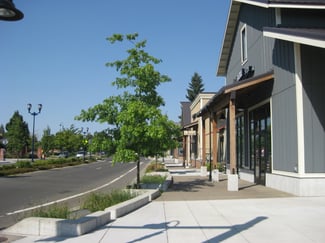
Healthy streetscapes and efforts to employ urban forestry techniques has a number of positive effects cities could likely not live without. Street trees help curb the urban heat island effect and can be effective in carbon sequestering in urban areas where carbon footprints tend to peak. They also provide much needed shading that improves not only the pedestrian experience, but also keeps your car cooler on a 90 degree day and helps businesses reduce energy through less air conditioning use. Street trees often times increase property values, aid in stormwater management, and serve as an added benefit to attract tourism, businesses, and economic investments. We have designed a number of these integrated type projects, the photo above is from a project where MacKay Sposito’s civil engineers and landscape architects worked together to design stormwater controls right in the planter strip yet integrated with aesthetically pleasing rain gardens, street trees, and hardscape components. Ignoring urban forestry techniques is often not an option anymore for cities with a growing (80%+) population living in urban areas. In fact, over the last couple of decades, many municipalities have move toward enhancing urban forestry environments and boosting tree inventories rather than neglecting them.
Many municipalities throughout the country and beyond have implored aggressive urban forestry strategies to improve quality of life and take advantage of other added benefits. Many Cities are now imploring technology like GIS to increase awareness and protection of their tree canopies utilizing these systems for not only identification and inventory but also for health assessments.
- The City of Charlotte, NC in 2017 set a lofty goal of increasing tree canopy in its parks and streets by 50% by 2050. This was not decided on by just Charlotte elected officials and higher-ups. Over 40 organizations and 3,000 Charlotte residents had input into the plan and 50% was the decided upon goal.
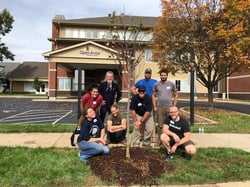 Louisville, KY rated as the 4th hottest urban area in the US, recently looked to urban forestry to help combat summer temperatures and improve quality of life. They found street/open space trees provide the most cost-effective long-term solution to mitigating heat islands and providing much needed heat reductions. They developed hot-spot maps and looked to infill troubled impervious areas with more street trees. Quality of life and the environmental effects weren’t the only thing Louisville was after. They found that if they could increase their tree canopy coverage to 45% it would be a savings of 67 million KW of energy or $5 million alone in utilities savings annually!
Louisville, KY rated as the 4th hottest urban area in the US, recently looked to urban forestry to help combat summer temperatures and improve quality of life. They found street/open space trees provide the most cost-effective long-term solution to mitigating heat islands and providing much needed heat reductions. They developed hot-spot maps and looked to infill troubled impervious areas with more street trees. Quality of life and the environmental effects weren’t the only thing Louisville was after. They found that if they could increase their tree canopy coverage to 45% it would be a savings of 67 million KW of energy or $5 million alone in utilities savings annually!
The photo above shows several involved citizens who are part of the ‘Citizen Forester Volunteer Group’, a group that was established as part of the emphasis on urban forestry in Louisville (some even dawning Louisville loves trees shirts!). Louisville even has a training program with ‘Citizen Forester’ courses 101 and 102 offered as any good urban forestry program has to involve key stakeholders (and maybe even some free labor).
- In Melbourne, Australia, due to a warming climate and decade-long drought, City officials’ set out on an aggressive 20-year urban forestry strategy aiming to double tree canopies by 2040. Since adopting the plan in 2012 Melbourne has planted nearly 12,000 new trees and mapped the species and health assessment of 70,000 others. This data allowed them to start diversifying their tree stock with a goal of providing no more than 5% of any one tree species, no more than 10% or any genus, and 20% of any one tree family. This diversification means Melbourne will enjoy a vibrant tree canopy for decades to come and not nearly as susceptible to infections and dying off of certain tree species or geniuses. City officials also believe this effort will help cool the city’s urban summertime temperatures by 4 degrees Celsius or over a whopping 10 degrees Fahrenheit! Melbourne even put together a full-on urban forest manual publication to solidify their serious approach to urban forestry and urban quality of life (see graphic below).
Urban forestry is vital in today’s society and at the forefront of managing our built environments with nonstop growth and significant climatic challenges present everyday. Quality of life directly relates to comfort and sustainability, continuing to bolster street and other public tree canopies aids greatly in feel and perception of our built environments amongst many other benefits. So, the next time you park under that street tree or plop down a blanket under a park tree, realize there is much more to the story than just shade for your car or lemonade in August. Those trees help lower the heat island effect, provide vertical scale at the pedestrian level, provide for social spaces where none would exist, help with reducing wind/noise, generally increase property values, and lower a business’s cost of goods sold through lower everyday energy use. You don’t have to be in a forest to hug a tree!
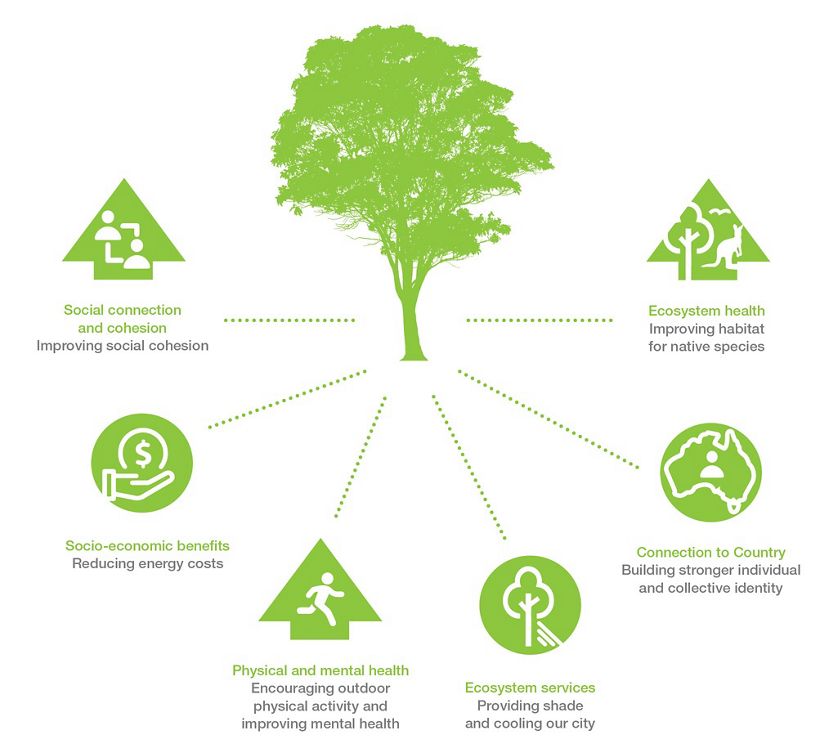
What are your thoughts about street trees? Should your city implement a more aggressive urban forestry strategy? Email me at nlowry@mackaysposito.com
SOURCES:
Wikipedia Urban Forestry: https://en.wikipedia.org/wiki/Urban_forestry
Deserted Alabama Mall: https://www.al.com/business/2016/05/post_346.html
Urban Forestry Case Studies: http://www.davey.com/environmental-consulting-services/urban-community-forestry-services/urban-forestry-case-studies/
Melbourne Urban Forestry: https://www.centreforpublicimpact.org/case-study/urban-forest/#public-confidence
Louisville Urban Forestry: http://www.louisvillegrows.org/urban-forestry/citizen-foresters-urban-tree/

